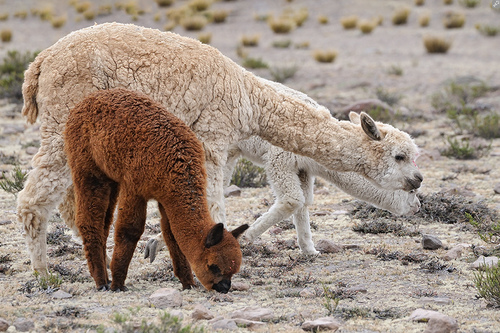
Alpaca
The alpaca, Vicugna pacos, captivates with its plush fleece and serene demeanor. Grazing the Andean highlands, it plays a vital role in the ecosystem, converting sparse vegetation into nutrient-rich fiber. This sociable creature enchants with its gentle curiosity, making it a beloved icon of South American wildlife.
15-20 years
Lifespan
48.0 - 84.0 kg
Weight
Length: 1.2 - 2.25 m; Height: 81 - 99 cm
Size
18 months
Age of Sexual Maturity
6 months
Age of Weaning
35 mph
Top Speed
Characteristics
Vicugna pacos, commonly known as the alpaca, is native to the Andean regions of South America. It thrives in high-altitude grasslands and is renowned for its soft, luxurious fleece. Alpacas are social animals, typically living in herds, and are known for their gentle and curious nature.
Distribution Range of the Alpaca
Vicugna pacos, commonly known as the alpaca, is native to the Andean highlands of South America. The species is primarily found in Peru, where it originated, but also inhabits regions of Bolivia, Ecuador, Chile, and Argentina.
Alpaca's Habitat
Environmental Conditions
Alpacas typically inhabit high-altitude environments in the Andes, ranging from 3,500 to 5,000 meters above sea level. These regions are characterized by cold temperatures with significant diurnal variation, low oxygen levels, and relatively dry conditions with seasonal rainfall.
Ecological Niche
Alpacas are well adapted to the alpine and puna grassland ecosystems of the Andes, where they graze on native grasses and other vegetation. They have specialized adaptations for coping with the high-altitude conditions, such as a dense fleece for insulation against cold temperatures and a unique hemoglobin structure for efficient oxygen utilization.
Copyright @ Nature Style Limited. All Rights Reserved.
 English
English